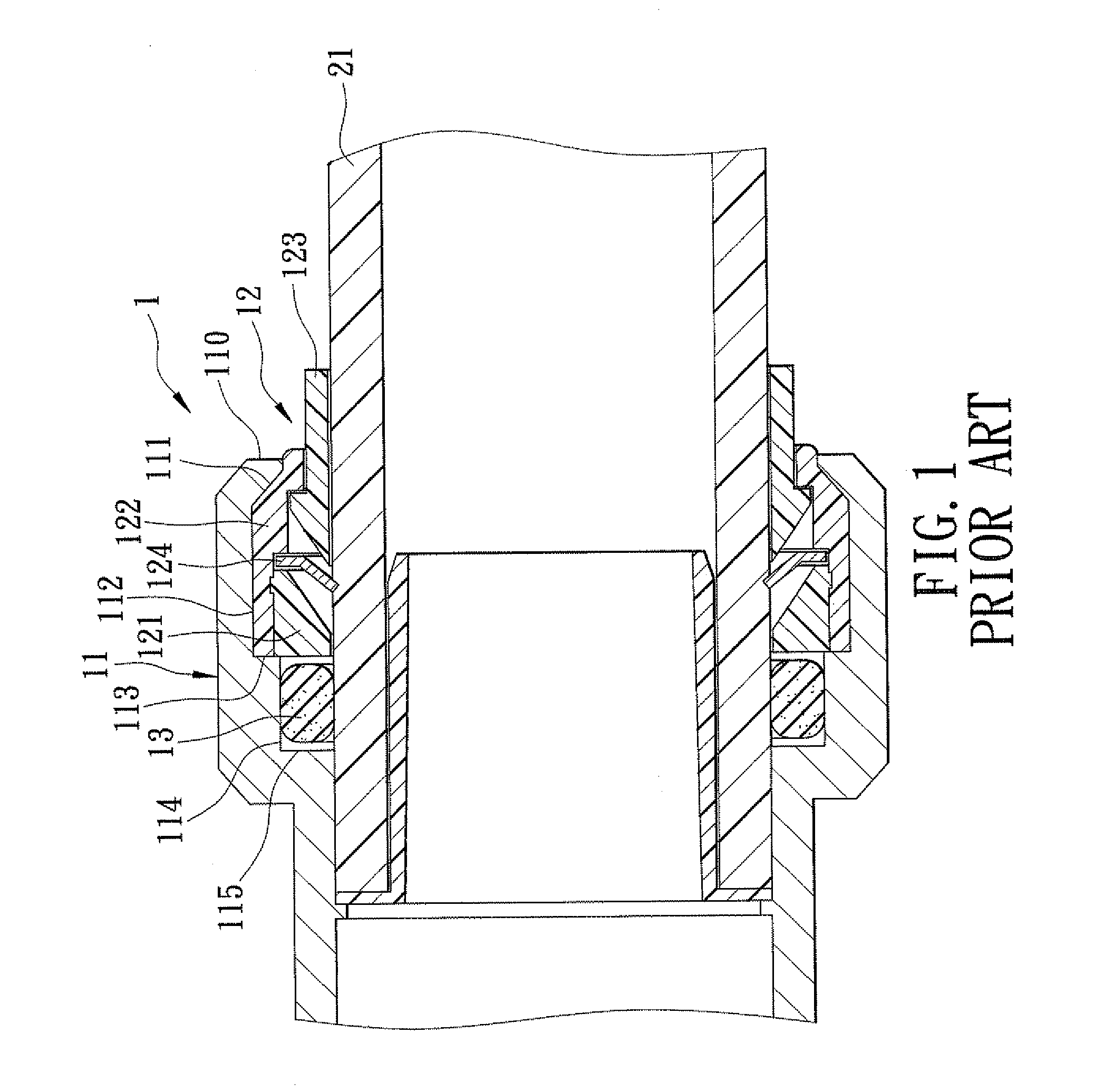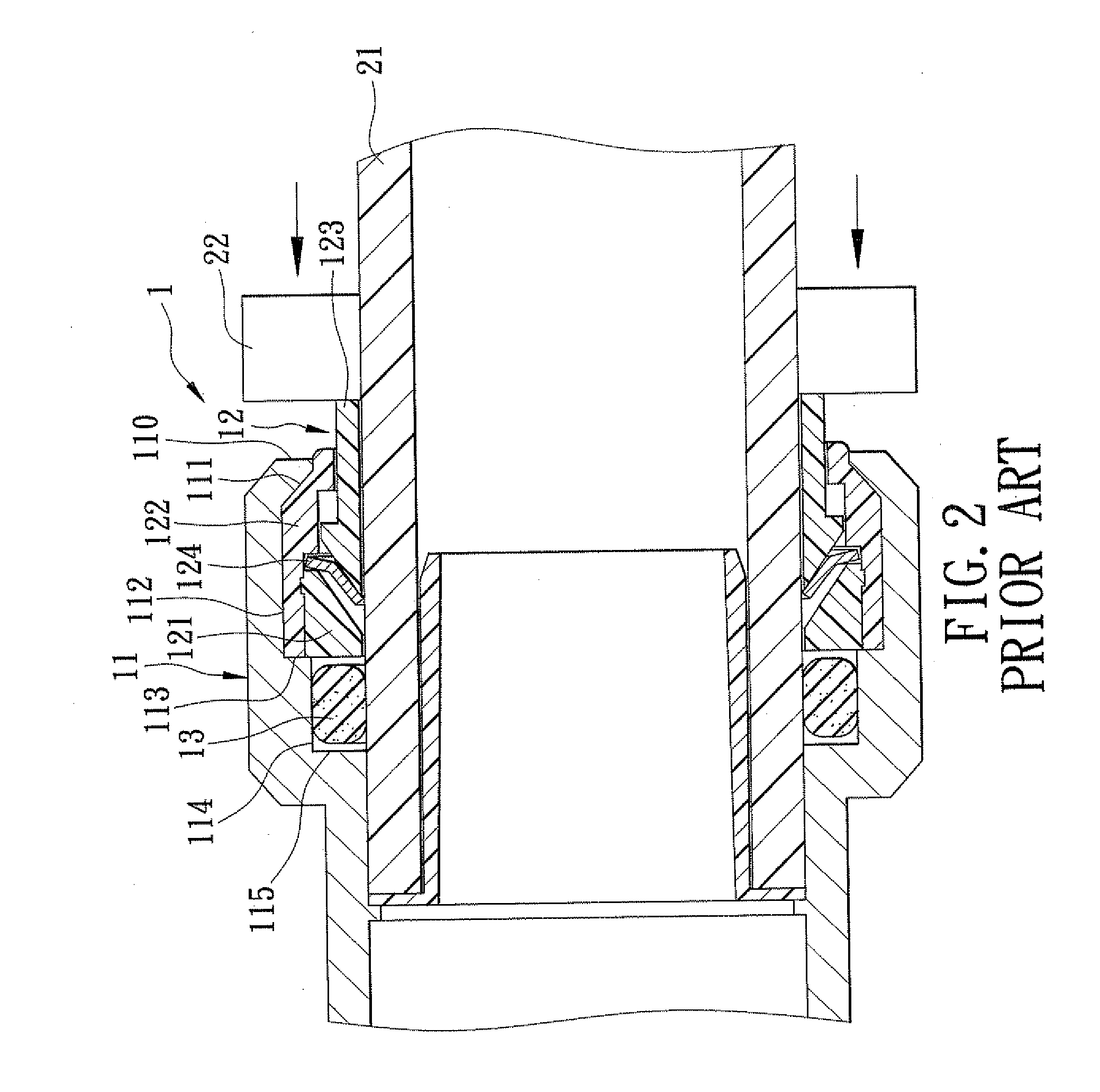Quick pipe connector
- Summary
- Abstract
- Description
- Claims
- Application Information
AI Technical Summary
Benefits of technology
Problems solved by technology
Method used
Image
Examples
Embodiment Construction
[0035]As shown in FIG. 3, FIG. 4 and FIG. 5, an embodiment of a quick pipe connector of the present invention is adapted for connecting to and disconnecting from a water pipe 23. The water pipe 23 can be made from one of cross-linked polyethylene (PEX), chlorinated polyvinyl chloride (CPVC), and copper (Cu), and can have pipe sizes ranging from ⅜″ to 2″ and the metric equivalents. The quick pipe connector includes a tubular housing 4, a connecting unit 5, a seal ring 6, and an inner support tube 7.
[0036]The tubular housing 4 includes a housing wall that defines an axis (X) and a receiving space 400 adapted for receiving an end portion of the water pipe 23. The housing wall has an end face 41, a first annular inner housing surface 42 connected to the end face 41, a second annular inner housing surface 44 disposed proximate to one end of the first annular inner housing surface 42 opposite to the end face 41 and having a radial dimension relative to the axis (X) that is larger than tha...
PUM
 Login to View More
Login to View More Abstract
Description
Claims
Application Information
 Login to View More
Login to View More - R&D
- Intellectual Property
- Life Sciences
- Materials
- Tech Scout
- Unparalleled Data Quality
- Higher Quality Content
- 60% Fewer Hallucinations
Browse by: Latest US Patents, China's latest patents, Technical Efficacy Thesaurus, Application Domain, Technology Topic, Popular Technical Reports.
© 2025 PatSnap. All rights reserved.Legal|Privacy policy|Modern Slavery Act Transparency Statement|Sitemap|About US| Contact US: help@patsnap.com



